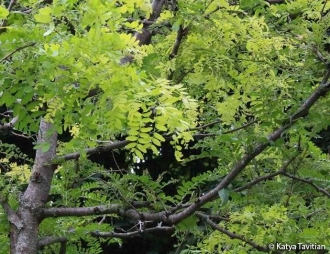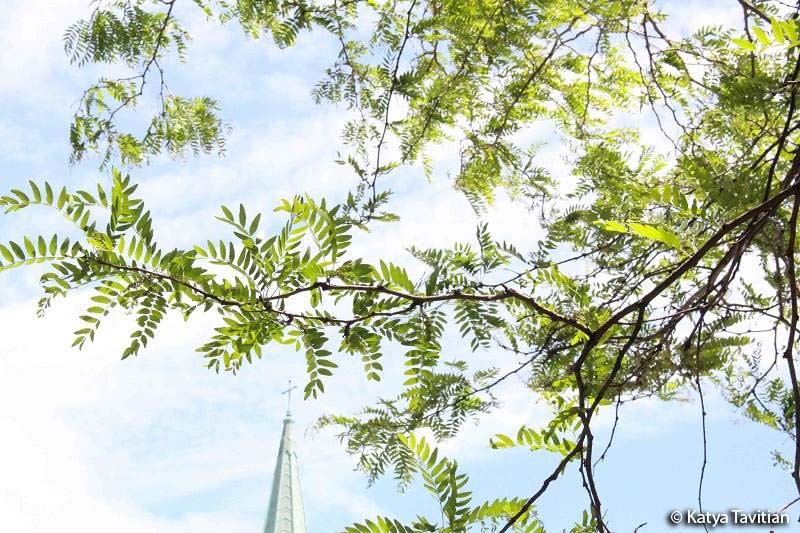Black locust, common locust or false acacia robina (Robinia pseudoacacia/ Robinier faux-acacia) is a non-native deciduous tree that originates in the United States but has spread to and been naturalized in Canada. It can be found in forests and on disturbed sites, (Tree Canada, n.d., Stone 2009). It is categorized as exhibiting invasive traits (not officially invasive) and a threat to the survival of native species (Tree Killers, n.d.).
The Black locust can be identified by its pinnately compound, alternate leaves. Each leaf has between 7-19 leaflets that are bluish-green and slightly pointy-tipped. Its flowers also come in groups; clusters of white, fragrant flowers that tend to droop, and later produce flat, brown legumes. Its young bark is brown, smooth, and thorny, and become darker, scaly and furrowed as they age (Stone 2009).
Wildlife benefit greatly from the black locust as a food source and as habitat, especially as nesting and roosting sites for birds. However, it is considered poisonous to livestock (but is often utilized in feed) and humans (but some eat fried flowers or use them in tea). Other uses that don’t risk poisoning oneself include using its durable wood for railway ties, furniture, and planting it as windbreaks and shelterbelts (Stone 2009). It was once planted often as an ornamental and because of its rot-resistance, but since its invasive potential was discovered, this has diminished. Not only does it prevent native tree growth by creating shade, but it also fosters the growth of other non-native species by altering soil chemistries with increased nitrogen (Tree Killers, n.d.). Its susceptibility to the locust borer is another reason for its decreasing planting popularity (Stone 2009).
Fun fact: Black locusts can reproduce from the seeds in their fruits, or, more commonly, by sprouting from roots or stumps (though we may not want them to because of their invasive tendencies)! Seed reproduction is less common because of they are quite large, resulting in limited dispersal and proximity to the parent tree (Stone 2009), under which they are less likely to sprout because they are shade intolerant (USDA, n.d.).


 Branches and leaves of a Black locust tree on the Loyola campus
Branches and leaves of a Black locust tree on the Loyola campus
 Leaves of a Black locust tree on the Loyola campus
Leaves of a Black locust tree on the Loyola campus